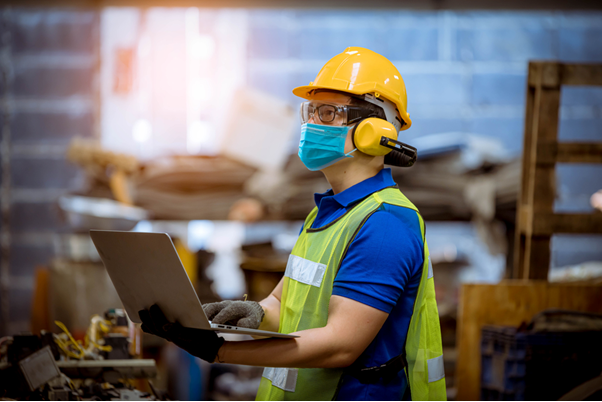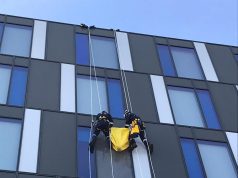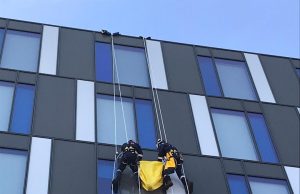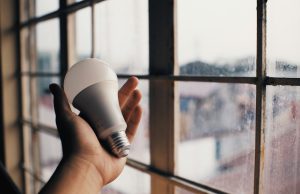
Thanks to the COVID-19 pandemic, the last few months have brought most construction projects to a halt. Domestic and commercial projects alike have been put on hold to protect workers from the risk of catching coronavirus and to ensure compliance with the COVID government guidance. However, with lockdown lifted and restrictions easing, London builders and contractors are starting to think about returning to work safely and the construction industry is beginning to get back on track.
So if you’ve been waiting to plan a construction project, be it a renovation or self build, it might be time to start planning.
It’s worth noting that things aren’t back to normal yet, and there are still lots of extra precautions you and your workers will need to take to protect yourselves and others from coronavirus transmission risks.
So in this article, we’ll explore some of the ways you can safely plan construction projects after COVID-19.
Make Sure You and Your Workers Have the Correct PPE
Personal Protective Equipment, otherwise known as PPE is by no means new to construction workers, but with COVID-19 still posing a real risk, workers will likely be using more PPE, more often, to protect themselves and others from the virus.
So before workers start on your project, make sure that your employees have all the required PPE. Respirators, gloves, face shields and perspex barriers may be required and workers should know when and how to use the appropriate items of PPE, and how to safely dispose of them. It’s not enough that your workers wear personal protective equipment; they also need to take used equipment away with them and dispose of it hygienically to prevent contamination through contact.
Always consider if you can carry out operations in a way that avoids the need for PPE as it should only be considered as a last resort. Ensure that any PPE issued is suitable for the hazards encountered. It would be advisable to keep records of any items of PPE issued to employees along with details of relevant training in its use, maintenance or disposal.
If workers are coming into your home, you and your family members will also need to wear a mask or face covering if hazards are present or you cannot maintain social distancing. COVID risk management during any construction or maintenance projects is a two-way street. Your workers will do everything they can to protect you, and you should do the same for them.
Consider How Social Distancing Can Be Maintained
Social distancing is one of the best control measures for airborne transmission risks, so workers should keep a safe distance from each other and you.
If you’re commissioning a large construction project, floor markings could be used around the site to help people keep their distance, or signs to remind people to stay apart.
You should bear in mind that some tasks might need to be carried out a little differently to normal if they usually involve multiple workers working closely — and this could cause tasks to become more time-consuming.
For example, when loading and unloading deliveries you could set up a one-way system for workers to transport materials from the delivery vehicle to the warehouse so even if multiple workers are loading, they don’t cross paths. For smaller deliveries to your home, you could ask drivers to leave deliveries outside, rather than entering the site or warehouse.
Manual handling tasks are another example of activities that usually involve more than one worker. There are a couple of ways your workers might introduce social distancing to handling and lifting processes. Large loads could be broken down into smaller loads so they can be lifted and transported by one person. If this isn’t possible, the use of machinery might make the job suitable for one person or eliminate manual handling totally.
However, there are always going to be some tasks that aren’t possible while social distancing, so these activities should be reviewed. If they’re not essential, the tasks shouldn’t occur. If there’s no way around people working closely during essential tasks, then personal protective equipment should be used and control measures implemented to reduce risks where possible.
Request a Regular Team of the Same Workers
Having workers come in and out of your home is a scary concept in the current climate. The last thing you want is many different people traipsing through your home. The risk of catching coronavirus goes up if you’re mingling with different workers each day, so don’t be afraid to ask your contractor if the same team can work on your project from start to finish.
Make Your Home Safe for Your Workers and Family Members
If you’re planning a construction project on your own home, you’ll need to take precautions to protect yourself, your family members and your contractors from the risk of COVID-19.
You can start by cleaning and disinfecting surfaces such as kitchen worktops, door handles, and tables before and after your contractors complete any work. You should also provide access to handwashing facilities and products (soap, hand sanitiser, paper towels etc.) Opening all the windows and doors before contractors arrive can also improve ventilation and reduce the risk of airborne transmission,
If the project is going to last a little while — a few days or more — you might want to consider staying somewhere else to reduce the risk of coronavirus transmission in your home. This way, you can keep your family safe and minimise the risk of catching anything from your contractors, while equally making sure you don’t pass anything on to your workers.
While the pandemic is still at large, you shouldn’t be in the room where your contractors are working anyway as this can make it difficult to maintain social distancing.
Make Workplace Hygiene a Top Priority on Larger Construction Sites
If your construction project is larger than a home project or it leans more towards the commercial end of the scale, you’ll need a few more precautions and control measures than the ones listed above.
Ensure that the welfare facilities provided are large enough to accomodate the workforce numbers on site. In some cases you may need to consider staggering break times to ensure social distancing requirements. Cleaning schedules of welfare facities may need to increase to ensure that they are maintained.
Good hygiene practices can keep COVID-19 at bay, so extra care and attention should be given to workplace hygiene. Surfaces, equipment and commonly used vehicle handles, control panels and doors should be cleaned and disinfected regularly — where possible, before and after every use. Don’t forget to include shared tools and equipment frequently used by multiple workers in your hygiene practices — buckets or wheelbarrows, for example.
Hand hygiene should also be encouraged and enforced around the workplace. Workers should wash their hands after each activity, when entering a different part of the worksite, after touching their mouth, nose or eyes, and after coughing or sneezing. Site visitors should also be asked to follow hand hygiene best practices. In some cases larger companies have appointed Covid-19 Supervisors to monitor compliance with their procedures and processes.
Handwashing stations and hand sanitiser dispensers should be placed around the workplace — particularly in high traffic areas — so workers and visitors can maintain good hand hygiene at all times. Signs and posters can also remind people to wash their hands.
Don’t Neglect Usual Health and Safety Practices
Over the past few months, COVID-19 has been the centre of attention in the world of health and safety. But that doesn’t mean you should focus solely on mitigating coronavirus risks and creating a COVID-secure workplace while neglecting other health and safety risks and practices.
Make sure you maintain an effective risk management strategy and continue implementing control measures to reduce or remove all types of risks.













